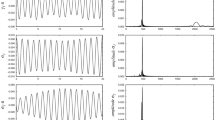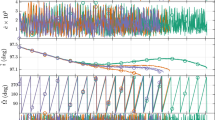Abstract
Since the time of Newton, astrodynamics has focused on the analytical solution of orbital problems. This was driven by the desire to obtain a theoretical understanding of the motion and the practical desire to be able to produce a computational result, Only with the advent of the computer did numerical integration become a practical consideration for solving dynamical problems. Although computer technology is not yet to the point of being able to provide numerical integration support for all satellite orbits, we are in a transition period which is being driven by the unprecedented increase in computational power, This transition will affect the future of analytical, semi-analytical and numerical artificial satellite theories in a dramatic way, In fact, the role for semi-analytical theories may disappear. During the time of transition, a central site may have the capacity to maintain the orbits using numerical integration, but the user may not have such a capacity or may need results in a more timely manner, One way to provide for this transition need is through the use of some type of satellite ephemeris compression. Through the combined use of a power series and a Fourier series, good quality ephemeris compression has been achieved for 7 day periods, The ephemeris compression requires less than 40 terms and is valid for all eccentricities and inclinations.
Similar content being viewed by others
References
Brouwer, D.: 1959, “Solution of the problem of artificial satellite theory without drag”, Astron. J. 64, 378–397.
Fitzpatrick, P. and Findley, G.: 1960, “The Tracking Operation at the National Space Surveillance Control Center”, Special Studies Section, Directorate of Aerospace, Air Proving Ground, Eglin AFB, FL.
The Astronomical Almanac for the Year 1987, United States Naval Observatory, Washington, DC.
Deprit, A., Pikard, H., and Poplarchek, W.: 1979, “Compression of ephemerides by discrete Chebychev approximations”, Navigation 26, 1–11.
Coffey, S., Kelm, B., and Eckstein, B.: 1996, “Compression of satellite orbits”, AAS/AIAA Astrodynamics Specialist Conference, Paper No. 96–125.
Hoots, F. and France, R.: 1987, “An analytical satellite theory using gravity and a dynamic atmosphere”, Celest. Mech. 40, 1.
Author information
Authors and Affiliations
Rights and permissions
About this article
Cite this article
Hoots, F.R., France, R.G. The future of artificial satellite theories Hybrid ephemeris compression model. Celestial Mech Dyn Astr 66, 51–60 (1996). https://doi.org/10.1007/BF00048823
Issue Date:
DOI: https://doi.org/10.1007/BF00048823




